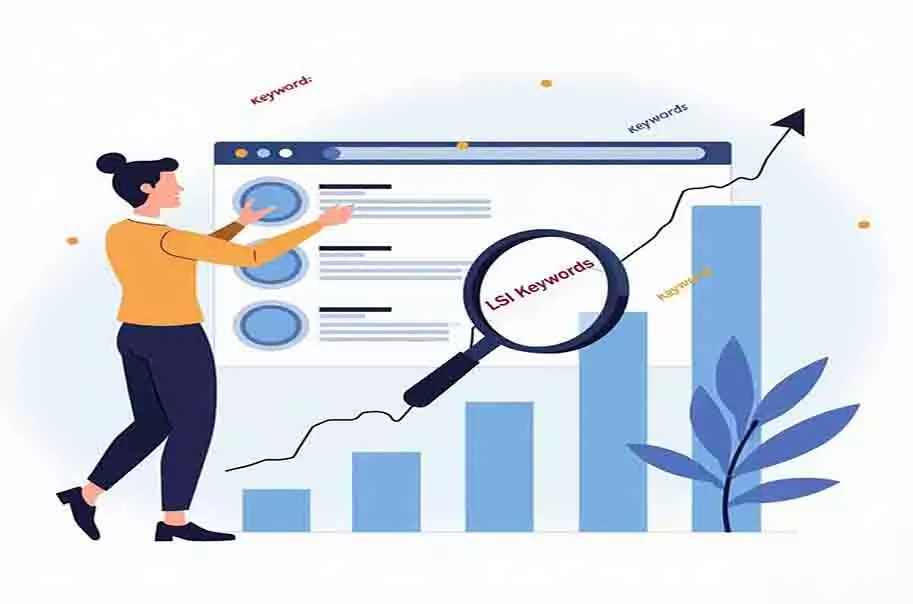In the evolving world of SEO, keyword optimization is no longer about stuffing exact-match phrases into content. Search engines have become smarter, focusing on the meaning and context behind search queries rather than just specific words. This is where LSI keywords in SEO and Semantic SEO come into play. By understanding these concepts, you can create content that ranks higher, provides value to users, and aligns with Google’s algorithm updates.
What Are LSI Keywords?
LSI (Latent Semantic Indexing) keywords are terms and phrases related to a primary keyword. These keywords help search engines understand the context of content more effectively. For example, if your primary keyword is “digital marketing”, some LSI keywords might be “SEO,” “content strategy,” “online advertising,” and “social media marketing.”
What is LSI Keyword in SEO?
In SEO, LSI keywords help improve a webpage’s relevance without overusing a single keyword. Google’s algorithms analyze these related terms to determine what a page is about, ensuring better rankings and user experience.
Benefits of Using LSI Keywords in SEO
- Avoids keyword stuffing penalties – Using related terms naturally enhances readability.
- Improves content relevance – Helps search engines understand the page’s subject.
- Enhances user experience – Content flows naturally and provides in-depth information.
- Boosts search rankings – Pages with well-integrated LSI keywords rank better for multiple search queries.
What is Semantic SEO?
Semantic SEO refers to optimizing content based on meaning and intent rather than just keywords. Search engines like Google use AI and Natural Language Processing (NLP) to analyze search queries, understanding what users mean rather than just what they type.
For example, if a user searches for “best smartphone for photography”, Google will not only look for this exact phrase but also consider related concepts like “high-quality camera phones,” “best mobile cameras,” and “top smartphones for photography.”
Key Semantic SEO Practices
1. Focus on Search Intent
Google categorizes search intent into four types:
- Informational – Users looking for knowledge (e.g., “What is Semantic SEO?”).
- Navigational – Users searching for a specific brand or website (e.g., “Google SEO guidelines”).
- Transactional – Users intending to make a purchase (e.g., “Buy SEO tools online”).
- Commercial Investigation – Users comparing options (e.g., “Best SEO plugins for WordPress”).
By aligning content with search intent, you increase its relevance and ranking potential.
2. Use Topic Clusters Instead of Single Keywords
Instead of focusing on one keyword, create topic clusters where a pillar page covers a broad topic and supporting pages dive into specific subtopics. For example:
- Pillar Topic: “On-Page SEO Strategies”
- Subtopics: “What Are LSI Keywords?”, “Optimizing Meta Tags”, “Best Internal Linking Practices”
This strategy strengthens content authority and boosts rankings.
3. Optimize for Voice Search and NLP
With the rise of voice assistants like Google Assistant and Siri, people use conversational queries more often. Optimizing for long-tail keywords and question-based queries (e.g., “How does Semantic SEO work?”) improves visibility in voice search results.
4. Use Structured Data and Schema Markup
Structured data helps search engines understand your content better. Schema markup enhances search snippets by providing additional details such as:
- FAQs (Frequently Asked Questions)
- Product Ratings and Reviews
- Event Details
This improves click-through rates (CTR) and enhances search visibility.
5. Build Contextual Internal Links
Instead of randomly linking pages, use contextual linking to guide users and search engines through related content. For example, linking a blog post on “What is LSI Keyword in SEO?” to a guide on “On-Page SEO Techniques” improves topical authority.
How to Find and Use LSI Keywords for Better Rankings
1. Use Google’s Autocomplete and Related Searches
Start typing a keyword in Google, and look at the suggested searches. Scroll down to the “related searches” section for more LSI keyword ideas.
2. Check Google’s “People Also Ask” Section
This provides common questions users ask related to your topic. Answering these in your content improves Semantic SEO.
3. Use LSI Keyword Tools
Several tools help find LSI keywords, such as:
- LSI Graph
- SEMrush Keyword Magic Tool
- Google Keyword Planner
- Ahrefs Keyword Explorer
4. Analyze Competitor Content
Check the top-ranking pages for your target keyword and identify common terms they use. Integrate these naturally into your content.
Conclusion
Optimizing for LSI keywords in SEO and implementing Semantic SEO practices can significantly improve your content’s search rankings. By focusing on context, search intent, and related topics, you create content that is both user-friendly and search engine-friendly.
Search engines are evolving, and so should your SEO strategy. Move beyond exact match keywords and embrace semantic optimization to stay ahead in the digital landscape.


